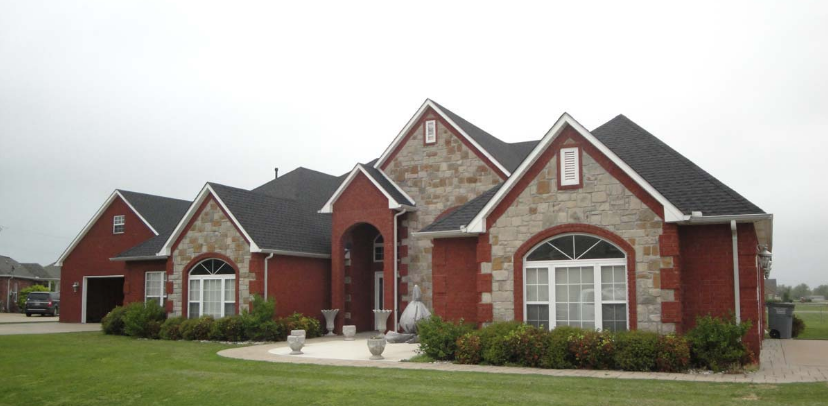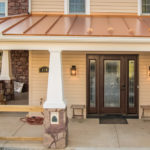Unless you’re in the construction business, you may not be aware that roofing styles and materials trend just like fashion, music, and topics on Twitter. In fact, every year, roofing styles and materials fall in and out of favor– and 2020 is no exception.
If it’s time for you to consider a roof replacement for your home, your best bet is to reach out to a local roofing company who can advise you on the best solution for your practical and aesthetic needs. In the meantime, think about these options for roof replacement styles and materials to get an idea of what you like and find attractive:
Roofing Styles
- Flat – This may be the simplest and often the least expensive type of roof to build, but there are considerations that can’t be skipped. Because it won’t drain well, a flat roof needs to be expertly waterproofed. For those in urban areas who wish to turn their roofs into more livable surface area, a flat roof design would be a great choice.
- Shed – Like a flat roof, a shed roof is a single plane. However, a shed roof is slanted– higher on one side than the other– which allows for far better drainage than a flat roof.
- Gable – A gable roof is another style of roof that is relatively easy to build and suitable to many different climates. A two-sided configuration that both slope down from a central ridge, a gable roof creates space for an attic and additional insulation. A vented gable room doesn’t collect debris like fallen leaves, nor does it allow snow or ice to accumulate.
- Hipped – Picture a central ridge from which two long sides and two shorter ones slanting downward. Because its eaves can be configured to provide shade to western and southern windows, the design of a hipped roof is ideal for warmer weather. Its wind and moisture resistance also makes it a good choice for climates where there are frequent rainstorms.
- Pyramid – A pyramid roof is similar to a hipped roof, except a pyramid is topped by a sharp peak instead of a flat ridge.
- Mansard – Another variation on a hipped roof, there are two slopes to this unique style of roofing. The lower slope contains dormer windows, and is much steeper than the upper slope. Mansard roofs are especially useful for those who want to maximize their living space, as this style allows for an additional story under the roof.
Roofing Materials
- Asphalt Shingles – Easily the most often-used residential roofing material in the US, asphalt shingles are an easy-to-install and economical option. Fiberglass or an organic material like cellulose can be used to reinforce asphalt shutters to provide greater strength and longevity without altering their appearance.
- Clay and Concrete Tiles – Clay tiles can be flat, scalloped or ribbed, and are extremely durable. Because they are very heavy, they should only be installed professionally. Like clay, concrete tiles are durable, heavy, and add interest and texture to a roof, but they are also less expensive.
- Metal Roofing – When it comes to weather resistance, metal roofs are at the top of the list. Metal shingles and panels are available in stainless steel, aluminum, copper, and zinc.
- Wood Shingles and Shake – A popular choice for hundreds of years, wood shingles and shakes turn an attractive, subtle shade of gray with exposure to the elements. Shingles are typically cut by machine; shakes have a more roughly-hewn look, as they are usually cut by hand.
- Slate – Available in traditional shades of green, grey and black as well as exotic purples and reds, slate roofing brings a unique elegance to roofs of all types.













